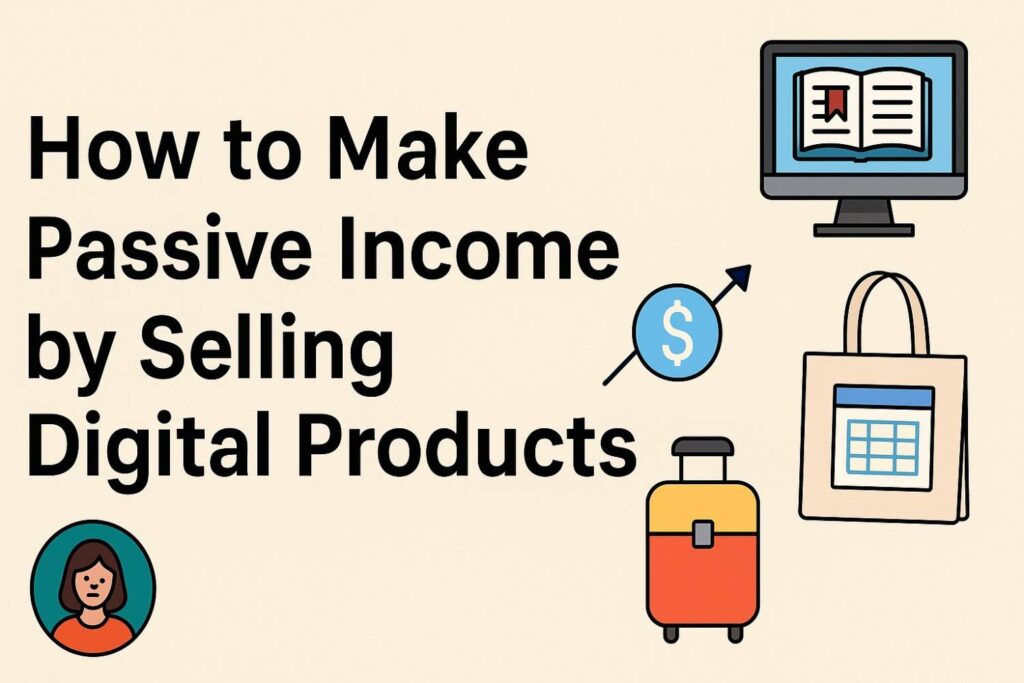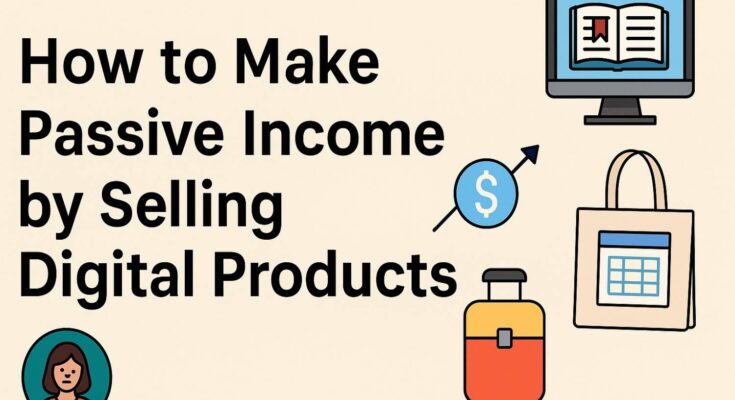In today’s digital economy, one of the smartest ways to build passive income is by selling digital products. With low startup costs, zero inventory, and global reach, this model allows you to generate income around the clock—even when you’re not working.
Whether you’re a student, a stay-at-home parent, a freelancer, or someone exploring side hustles, selling digital products can be your gateway to financial freedom. The key is to understand what to sell, how to sell it, and how to set up systems that continue to generate revenue long after the initial work is done.
This guide breaks it all down for you in a simple and professional way—without hype, without fluff—just real steps and strategies that work.
Table of Contents
What is Passive Income and Why Digital Products are Ideal
Passive income is money you earn on an ongoing basis for work you do once. It’s not instant. It takes effort to set up. But once in place, it can continue to bring in money with little or no additional work.
Digital products are ideal for this because they:
- Can be created once and sold unlimited times
- Don’t require shipping, storage, or physical handling
- Are low-cost to produce
- Can be delivered instantly to buyers
- Scale easily with automated systems
A well-made digital product can sell for years without needing updates or management. That’s why more and more creators and entrepreneurs are entering this space.
Types of Digital Products That Can Generate Passive Income
Before jumping in, you need to decide what kind of product you’ll offer. The options are broad, but here are the most profitable and beginner-friendly types of digital products.
1. eBooks and Digital Guides
If you have expertise or experience in any area—business, parenting, fitness, finance—you can package your knowledge into an eBook or guide. These are often sold as PDFs and are easy to create using tools like Google Docs or Canva.
People are constantly searching for helpful, affordable guides to solve specific problems. For example:
- A beginner’s guide to stock investing
- A budget planner for students
- A step-by-step guide to starting a freelance career
Once published, your eBook can earn income on platforms like Gumroad, Amazon Kindle, or your own website.

2. Online Courses and Video Tutorials
The e-learning industry is booming, and there’s room for everyone—not just big-name instructors.
If you’re good at something (designing, coding, marketing, editing videos, even baking), you can create a mini course and upload it on platforms like:
- Teachable
- Udemy
- Thinkific
- Kajabi
Courses don’t have to be long. A short, focused course that solves a single problem often sells better than a lengthy one that tries to cover everything.
3. Printables and Planners
Printables are simple PDF downloads that people print at home. These include:
- Daily planners
- Habit trackers
- Wedding checklists
- Educational worksheets for kids
They are extremely popular on Etsy, and once you’ve created a collection, you can keep earning from them for months or even years.
4. Templates and Digital Assets
Templates save people time and effort, which is why they sell so well. Some high-demand templates include:
- Resumes and cover letters
- Business pitch decks
- Instagram post templates
- Website and landing page mockups
- Canva templates for small business owners
You can sell these assets on marketplaces like Creative Market, Etsy, or directly through your own site.
5. Audio Products and Music Files
If you’re musically inclined, you can create:
- Background music for videos
- Meditation and relaxation audio
- Royalty-free sound effects
- Voice-over packages
These are ideal for YouTubers, game developers, and content creators who are always looking for affordable audio files they can legally use.
Platforms like AudioJungle, Pond5, and Gumroad are excellent places to start.
Read Also: How to Start Your Freelance Career and Earn Up to $2000 Monthly as a Side Hustle
How to Create a Digital Product That Sells
It’s not enough to just have a product. It needs to solve a problem or offer clear value. Here’s how to approach product creation the right way.
Identify a Problem or Need
Successful digital products solve specific problems. Before creating anything, ask:
- Who is my target audience?
- What are they struggling with?
- What kind of solution would they pay for?
For example, a new freelancer might need a simple invoice template or a basic guide to pitching clients. Your product should make their life easier, faster, or more organized.
Plan the Structure of Your Product
Once you know what you’re solving, outline the structure:
- For eBooks: Chapters, visuals, bonus tips
- For courses: Modules, lessons, worksheets
- For templates: Instructions, variations, usage tips
You don’t need expensive software. Most digital products can be made using:
- Canva (design and templates)
- Google Docs or MS Word (eBooks and guides)
- Loom or OBS (screen recordings for tutorials)
- Audacity or GarageBand (audio editing)
Focus on quality, clarity, and simplicity.
Package and Format It Properly
Your final product should be easy to download and use. Common formats include:
- PDF for documents and printables
- MP4 or MOV for videos
- PNG or PSD for design assets
- ZIP files for bundled content
Make sure the file names are clean, instructions are included if needed, and everything looks professional.
Where to Sell Your Digital Product
Now comes the part where you start earning—putting your product out into the market.
Online Marketplaces
Here are popular platforms based on the type of product:
| Product Type | Best Platforms |
|---|---|
| eBooks | Amazon Kindle, Gumroad, Payhip |
| Courses | Udemy, Teachable, Thinkific |
| Printables | Etsy, Creative Market |
| Templates/Designs | Creative Market, Canva, Etsy |
| Audio | AudioJungle, Pond5, Bandcamp |
Marketplaces handle payments, delivery, and traffic—but they also charge fees or take commissions. Still, they’re perfect for beginners.
Your Own Website
Once you gain experience, having your own website gives you:
- Full control over pricing and branding
- Direct customer relationships
- Zero commission fees
You can set up a simple site using WordPress + WooCommerce or platforms like Shopify and Podia. Payment gateways like Stripe or PayPal can be integrated easily.
How to Automate and Scale Your Passive Income
The real benefit of digital products comes when you set it and scale it. Here’s how to turn it into a self-sustaining system.
1. Use Automated Delivery Tools
Platforms like Gumroad or Shopify automatically send files to customers after payment. You don’t have to manually send anything.
2. Build an Email List
Collecting emails allows you to market new products, offer discounts, and build trust. Use tools like Mailchimp or ConvertKit to create email sequences that run on autopilot.
3. Create Content That Drives Traffic
Write blog posts, make YouTube videos, or post on Pinterest and Instagram. These channels bring free, long-term traffic to your product pages.
Example: A blog titled “10 Printable Planners to Stay Organized in 2025” can rank in Google and bring steady traffic every month.
How Much Can You Realistically Earn?
Your income depends on the niche, demand, and how many products you offer. Here’s a rough breakdown:
| Stage | Monthly Potential |
|---|---|
| 1 product | $50 – $300 |
| Small product library | $500 – $2,000 |
| Branded store + audience | $3,000 – $10,000+ |
Some creators reach $1,000/month in under 3 months. Others build full-time businesses from digital products alone.
Consistency and smart marketing are key.
Final Thoughts
Selling digital products is one of the most powerful ways to earn passive income online. It doesn’t require large investments, advanced tech skills, or a big audience to start.
What it does require is:
- A clear understanding of your audience
- A useful, well-made product
- A system for selling and promoting
Start small. Focus on quality. Improve as you go. Over time, your digital product store can turn into a reliable source of passive income.
You’re not just selling a file—you’re selling a solution. And solutions always have value.

